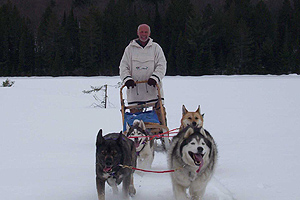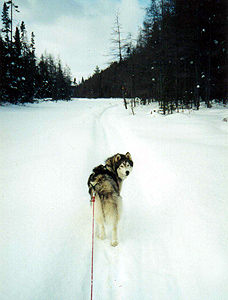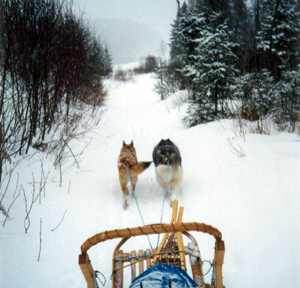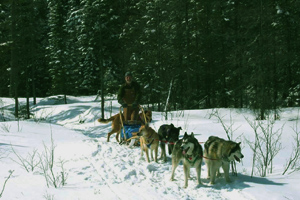Table of Contents
*
F.I.D.O.: Ken Beattie
*
Nunavik Dog Slaughters, Part II
*
Fan Mail
*
In the News
*
Behavior Notebook: Life in the Pack
*
Book Review: Soldiers & Sled Dogs
*
Janice Howls: Preserving Nature's Standard
*
IMHO: Tough Dogs, Tough Owners
Navigating This
Site
Index of articles by subject
Index
of back issues by volume number
Search The
Fan Hitch
Articles
to download and print
Ordering
Ken MacRury's Thesis
Our
comprehensive list of resources
Talk
to The
Fan Hitch
The Fan
Hitch home page
ISDI
home page
Editor's/Publisher's Statement
Editor: Sue Hamilton
Webmaster: Mark Hamilton
The Fan Hitch welcomes your letters, stories, comments and suggestions. The editorial staff reserves the right to edit submissions used for publication.
Contents of The Fan Hitch are protected by international copyright laws. No photo, drawing or text may be reproduced in any form without written consent. Webmasters please note: written consent is necessary before linking this site to yours! Please forward requests to Sue Hamilton, 55 Town Line Rd., Harwinton, Connecticut 06791, USA or mail@thefanhitch.org.
This site is dedicated to the Inuit Dog as well as related Inuit culture and traditions. It is also home to The Fan Hitch, Journal of the Inuit Sled Dog.

The 2005 team. Lead: Sam (r), Max (l);
Wheel: Lara (l),
Luna (r)
photo:
Suboch
Ken Beattie
Toronto, Ontario, Canada
TFH: How and when and why did you get
started dogsledding?
KB: I suppose I should start by admitting that in
my case, the
F.I.D.O. acronym means "Fantasy Inuit Dog Owner".
I'm an enthusiast,
but not an owner.
Getting into dogsledding was an accident. In the winter of 1999, we gave a home to a stray husky who we named Sam. Not knowing anything about northern dogs and needing information on care and feeding, I phoned my brother who has a friend with a kennel of racing Siberians. She found out I am a cross-country skier and told me, "All you need is one dog. Get him a harness." Up to that point in time, I had never heard of skijoring, but it sounded like fun. XC ski resorts normally don't allow dogs on their trails, so Sam and I headed for Algonquin Park, where they have dogsledding trails as well as ski trails. There I met a number of tour operators and guides. I could ski, but knew nothing about sled dogs. They had a wealth of knowledge about dogs and were very generous in helping me get started. We learned a lot just by hanging around and chasing their teams along the trails.
One weekend Sam and I went camping. On returning to the trailhead, I ran into a couple of dogsledding acquaintances and mentioned how hard it was to ski with a 50lb pack and a dog pulling me. One of them said that he had a small sled that could be pulled by one dog, and offered to lend it to me. I learned that he is a sled builder, so instead of borrowing a sled, I had him build one for me. After that, things spiraled out of control.
TFH: How many dogs do you have? What kind
are they?
KB: I have two. Sam is the husky that I
started with.
He looks pretty much like a Malamute, but he's smaller and
has blue eyes,
so I think he's probably a Malamute-Siberian cross.
Max is a shepherd-husky
cross, or so I was told. He looks like the sort of
animal that mushers
refer to as a "houndy dog." Max has neither the
appearance nor many
of the instincts of a northern breed, but he's big and
fast and works tremendously
hard.
TFH: How do you put together a team?
KB: Initially, it was completely ad hoc. I
would show
up at the trailhead intending to skijor.
Occasionally, a tour operator
or guide would have extra dogs on hand, and would loan me
dogs and a sled.
This worked well for all of us. The dogs got to run
- there is nothing
that frustrates a sled dog more than being left on the
picket line when
the rest of the pack is running - and I got to go
dogsledding.
Around the same time as I got my own sled, I was walking Sam in a park near my home. I got talking to a woman who was walking a Norwegian Buhund named Luna and a big collie-shepherd cross named Lotus. It turned out that she likes her dogs to get lots of exercise, but doesn't like winter. Since her dogs got along well with Sam, she offered to let me borrow Luna on weekends. So I moved up to skijoring with two dogs instead of one, and sometimes dogsledding with Sam, Luna and dogs loaned to me by helpful guides. Sam had taken well to skijoring, and since he was accustomed to being in front, I was able to run him as a lead dog on the improvised teams. Luna was happy running next to Sam, so I used her as co-lead, with borrowed dogs at wheel. Several times, I also put Lotus on the team. We quickly learned, to Lotus's regret, that he's a great pet but definitely not a sled dog!
Team membership started to stabilize two winters ago. I got my second dog, to the great dismay of Sam, who would much rather have been an only dog. And a neighbor adopted a homeless Malamute, Kimo. So Kimo was put on the team. Now, including Luna, I had the same four dogs every weekend.
Kimo and his owner have since moved away from the city. But - mirabile mirabilis - Luna's owner regained possession of Lara, a Siberian who had run away from her three years previously. Microchips are a great invention! So again this winter, I have had a team with consistent membership.
TFH: Where have you run your team?
KB: With the team and sled, we run primarily in
Algonquin Provincial
Park. It is a large area, has some of the loveliest
terrain in south-central
Ontario, has a good trail network, and is not too crowded
in winter.
We also use unplowed roads and snowmobile trails near my
in-laws' cottage.
I still go skijoring with one or two dogs, usually when I
can't get away
from the city for the weekend. On these occasions, I
try to find
trails closer to home.

Skijoring with Sam in
2001
photo: Beattie
TFH: What sort of adventures have you had
with your dog
team?
KB: I have had some enjoyable experiences - whether
traveling
by dog team or canoe or skis or mountain bike - but I try
to avoid "adventures",
especially when I'm alone and miles from the nearest
road. People
who have adventures can end up bagged and tagged.
One small adventure that sticks in my mind happened right here in the city. It was one of those unusual times when Toronto had a lot of fresh snow. That evening, I picked up my friends' dogs, hooked them up with mine in front of the house, and took off down the street. Everything was fine until we reached a six-lane arterial road at the end of the street. The dogs wanted to keep on going. I managed to turn them before they got out into the traffic, but then ran into another problem. The next day was garbage day and several homeowners had already put their trashcans out at the curb which the wind had blown over. Some smells are so delicious that dogs don't care how loudly you shout, "On by!" The tangle was unbelievable. Fortunately, we were close to home. I grabbed my cell phone and called my wife, who came out and helped me untangle the dogs. We leashed them and walked them home, with me pulling the sled myself. So much for urban dogsledding.
TFH: To what do you attribute your success
at creating
a (pick up) team of dogs?
KB: Partly good luck, partly dogs that like to run
and get along
well together at least most of the time, and partly lots
of lines:
I re-configure the team whenever conditions warrant.
Most of the
time, I hook up pairs of dogs in a conventional tandem
hitch, and move
the dogs around depending on who is running well at a
given position at
that point in time. But if there are personality
conflicts, I sometimes
run a single leader and a single swing dog with a pair of
wheel dogs.
This winter I experimented with running them single
file. It makes
for a long team, but it works better on narrow trails
because the dogs
aren't crowding each other off the trail.
TFH: How did you first become aware of the Inuit
Sled Dog? What
attracted you to them?
KB: Not long after I started skijoring, I met a
guide in Algonquin
Park who used them. I was impressed with their
appearance, their
attitude, and their remarkable pulling ability.
Around the same time,
I joined a skijoring internet discussion group.
Someone posted some
misinformation about Inuit Sled Dogs, and Sue Hamilton of
ISDI posted a
correction. I contacted her, looking for more
information, and as
I learned more about them, became even more impressed.
TFH: What experience/interactions have you
had with ISDs?
KB: Very few. The first contact was an
encounter on a
trail in Algonquin Park. The guide had a big
freighter toboggan and
a team of pure Inuit Dogs. The total load, including
the toboggan
itself, the gear, a passenger, and the guide, was
estimated by the guide
at around six hundred pounds. It took only four dogs
to pull it.
My usual standard, based partly on my own experience with
my ad hoc teams
and partly on what I have learned watching and talking to
tour operators
and guides, is that a sled dog should be able to pull its
own weight.
These dogs were hauling almost twice that much with no
apparent difficulty.
Since then, there have been very few contacts. I
have had the pleasure
of meeting Barry Salovaara and Tina Portman (F.I.D.O.,
March
2004) and their pack. About a year ago, the
Outward Bound
organization re-located their Ontario base to central
Ontario and started
running trips into Algonquin Park. Some of their
dogs appear to be
ISDs. And last winter I happened to meet a musher
from the Ottawa
Valley who had a mixed team, some of which were
ISDs.
TFH: You don't own ISDs yet there's no denying
that you are a
true breed enthusiast. Please share with our readers why
this is the case.
KB: I live in the downtown core of a city of almost
2.5 million
people. It is a hostile environment for working dogs
of any sort,
let alone a breed that evolved over many centuries to
thrive in the far
North. Barry's F.I.D.O. article mentioned the
problems he and his
dogs encountered in a smaller city. It would be
utterly impractical
where I live.
I have to remind myself that although ISDs are wonderful sled dogs, they really aren't pets. The dogs that I have interact well with the human members of my "pack", are tolerated by my neighbors, and are not too hard to handle. And a very important point is they accept dogs from outside their own pack well enough that I can put together a weekend team without fear of bloodshed. I am not confident that I could do that with Inuit Dogs. So while ISDs are ideal for the work they were intended to do, my needs are different from those of a subsistence hunter in the high Arctic. I have to look for a compromise, dogs that will pull but are more suited to an urban environment. It is possible for me to go out in the winter with my dogs, enjoy a good time with them, and once in a while have the opportunity to admire a team of Inuit Dogs without being an owner.

Luna (l) and Sam
(r)
photo:
Beattie
TFH: Why is the survival of the pure ISD
important? Why is it
important to you?
KB: There are a number of reasons. I believe
that there
will always be a role for dogs to play in the North.
We may not be
as enlightened as the Danes and Greenlanders, and most
Canadian northerners
will always prefer snowmobiles, but there will also be at
least a few who
prefer traditional modes of life and transportation.
There will also
be those who use dogs for adventure tourism. An
excellent example
would be Matty McNair, who recently led an expedition to
the North Pole
using Inuit Dogs. Inuit Dogs are far superior to
crossbreeds for
these purposes.
But ultimately, it is important to me because dogs - meaning the real dogs of the North - are an essential part of the North and its culture. The North without dogs would be a sadly diminished place.
TFH: What are your thoughts on who should play a
role in the
future of ISDs?
KB: Anyone who is interested in them.
Ideally, since the
dogs are so magnificently adapted to the northern
environment, Inuit who
own and use them in the North should play a major role.
But the culture
has changed. For a variety of reasons, few or none
live a subsistence
lifestyle, out on the land year round. And
governments at both federal
and territorial levels appear unsympathetic to the needs
of the dogs and
their owners.
Also worthwhile would be a greater awareness and use of Inuit Dogs by southerners (or perhaps I should say southerners who are oriented to the North), and by people in the North who are trying to preserve and restore at least some aspects of their traditional lifestyle and culture. I suppose the best-known examples would be Paul Schurke in Minnesota, Matty McNair in Iqaluit, Nunavut, and the March 2005 The Fan Hitch F.I.D.O. Allen Gordon of Kuujjuaq, Nunavik.
Another option would be expanding the use of Inuit Dogs by small guiding businesses and recreational mushers in the south. The dogs would be few and geographically dispersed, so it might be difficult for their owners to breed them to other ISDs. The Inuit Sled Dog International could be of assistance if this turned out to be a problem, helping ISD owners to connect with each other.
TFH: For years, your federal government and that
of your neighboring
province, Quebec, have been asked to address the issue of
the slaughtering
of dog teams in Nunavik. Do you think government officials
should acknowledge
what was done more than fifty years in the past? If so,
what should the
provincial and federal government offer in the way of
making amends?
KB: The government should definitely address the
issue of the
slaughter. They should first admit the facts of what
was done, and
then try to explain their reasons for why they did
it. But I'm not
going to hold my breath waiting for them to do so.
Governments on
the whole are not good at admitting anything, let alone
accepting responsibility
and mitigating the outcomes of government actions of the
past.
Across the circumpolar North, only in Greenland has the government adopted policies that were and are reasonably favorable to local people and to their dogs. In Alaska and the western Arctic, indigenous dog types were obliterated by contamination of the gene pool. Soviet authorities in Moscow ordered the killing of many thousands of huskies in Siberia. In Ottawa, they gave similar orders, for reasons that are as yet unclear. I don't want to speculate on how much help politicians from the North are likely to be in finding out exactly what happened and why. Community leaders and organizations such as Makivik are asking for an inquiry, and I hope their efforts are successful.
"Making amends" in Canada tends to involve long time frames, decades-long investigations and court actions, and ultimately the expenditure of vast sums of money of which little ever reaches the people who are supposed to be compensated. I see no advantage to taking this route in this situation.
But governments could nevertheless play a useful role, simply by getting out of the way of people who would like to see Inuit Dogs flourish in the North. It would help if - to pick an obvious example - regulations were made that allowed people to keep Inuit Dogs properly, in a traditional manner: not chained away from the families who own them, but allowed to interact with people and be properly socialized and cared for.
The contamination of the gene pool continues unabated. This could be stopped very easily. I wouldn't expect people to give up their pets. But it would be a simple matter to require the neutering of all non-sled dogs brought into the North. Given the low numbers of ISDs compared to the need for sled dogs in general, it would probably be unreasonable to require the neutering of non-ISD sled dogs. But it should be possible to favor the breeding and use of pure ISDs over other sled dog types, and to discourage inter-breeding. So over time, the number of pure dogs would increase faster than the number of impure ISDs or other sled dog breeds.
As to increasing the number of Inuit Dogs in Canada, there is an obvious source: Greenland. I know that Greenland Inuit Dogs vary to some extent from each other and from Canadian Inuit Dogs. However, for centuries, while Greenland was a Danish colony and what is now Canada did not even exist as a political entity, people and dogs traveled freely between the two areas. So there should be dogs in northwest Greenland that are essentially the same as the dogs that lived on Baffin Island, in Nunavik, and in northern Labrador.
The governments of Canada, Nunavut, and Nunavik could "make amends", if we want to call it that, by making it easy for northern Canadians to keep, use and breed teams of dogs acquired from the people of Greenland. An appropriate role for government in this scenario would be DNA testing to ensure purity, the payment of travel costs for the dogs and those involved in bringing them here, and possibly the establishment and subsidization of programs aimed at the keeping and breeding of pure dogs.

The 2004 team. Lead: Sam (r), Kimo (l);
wheel: Max (r),
Luna (l);
Lotus brings up the
rear
photo:
Suboch